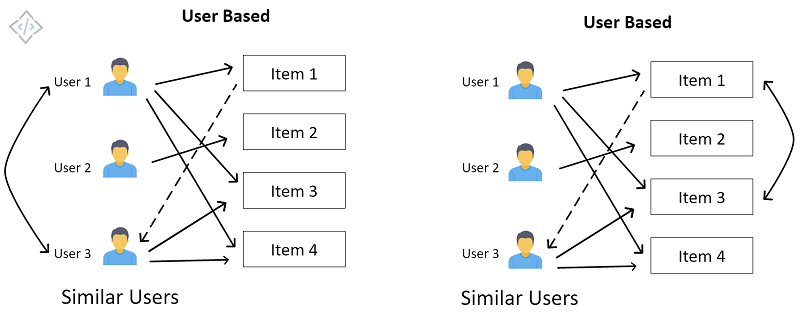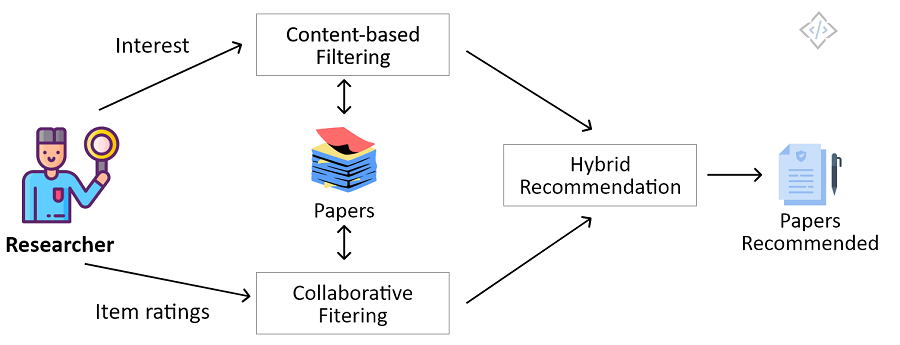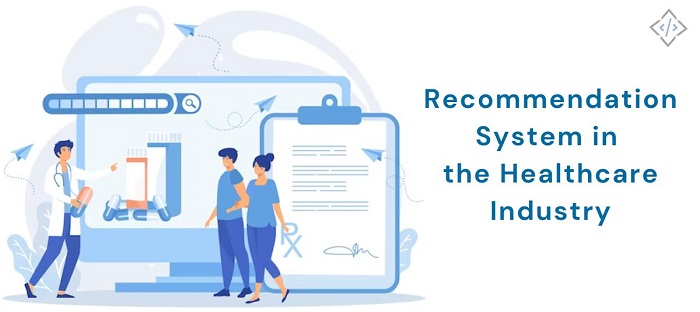
How Recommendation Systems Know You Better Than You Think
In today’s data-driven world, recommendations are omnipresent. From the movies you watch on Netflix to the products you see on Amazon, Algorithms are constantly working behind the scenes to anticipate your needs and suggest what you might like next. But how do these recommendation systems work? And how can they seem to know you better than you sometimes know yourself?
In this article, we discuss what is recommendation systems, explore their types, and applications, and explore how recommendation system helps in the healthcare industry. By understanding these systems, we gain valuable insights into the way technology shapes our online experiences and influences our choices.
What is a Recommendation System?
A recommendation system, also known as a recommender system, is essentially a digital matchmaker. It's a type of machine learning system that helps users discover new things they might like, based on their past behaviors, preferences, and the choices of similar users.
This data can include anything from past purchases and browsing history to ratings and reviews. By identifying patterns in this data, the system can create a personalized profile of each user and recommend items that align with their interests.
Think of it like a friend who knows your taste in movies, music, or products well. They can analyze what you've enjoyed in the past and suggest similar things you might like, or even hidden gems you have yet to encounter.
Types of Recommendation Systems
Recommendation systems are powerful tools that can be used to personalize user experiences and increase engagement. They work by analyzing user data to predict what items or services a user is most likely to be interested in. Mainly three types of recommendation systems, each with its strengths and weaknesses.
- User-based collaborative filtering
- Item-based collaborative filtering
1. Collaborative Filtering (CF)
This type of system recommends items to a user based on the preferences of other users who have similar tastes. It works by identifying users with similar preferences to the target user and then recommending items that those users have liked. There are two main types of collaborative filtering:
This type of system recommends items based on the preferences of users who are similar to the target user. For example, if a user has liked movies A, B, and C, and other users who liked movies A and B also liked movie D, then the system might recommend movie D to the target user.
This type of collaborative filter system recommends items that are similar to items that the user has already liked. For example, if a user has liked movies A, B, and C, and movies B and C are also similar to movie D, then the system might recommend movie D to the target user.

2. Content-based Filtering
In content-based filtering system recommends items to a user based on the attributes of the items themselves, such as genre, director, cast, author, or keywords. It works by building a profile of the user's preferences based on the items they have liked in the past and then recommending items that have similar attributes. For example, if a user has liked movies A, B, and C, which are all comedies, the system might recommend other comedies to the user.
3. Hybrid Recommender Systems
A hybrid recommender system combines collaborative filtering and content-based filtering to provide more accurate recommendations. The hybrid system can leverage the strengths of both approaches to overcome the limitations of each. For example, a hybrid system could use collaborative filtering to recommend items to new users for whom there is not enough data to build a good content-based profile, and then use content-based filtering to refine the recommendations as the user rates more items.

In addition to these three main types, there are also several other types of recommendation systems, such as:
Demographic-based recommender systems: These systems suggest items to users according to their demographic details, including age, gender, and location.
Knowledge-based recommender systems: These systems use knowledge about the relationships between items to recommend items to users. For example, a knowledge-based recommender system might recommend a movie to a user based on the fact that the user has liked other movies by the same director.
Utility-based recommender systems: These systems recommend items to users based on how much the user is likely to value the item. Utility-based systems can consider various factors, such as the user's past ratings, the ratings of other users, and the price of the item.
The best type of recommendation system for a particular application will depend on the specific needs of the application and the data that is available.
Artificial Intelligence Applications in Recommendation Systems
AI applications in recommendation systems employ sophisticated methodologies to improve engine performance. By analyzing complex datasets and learning from user behavior, preferences, and interactions, AI-based recommenders generate highly accurate and personalized suggestions.
Key AI Models Used In Recommendation Systems
1. K-Nearest Neighbors (KNN)-Based Collaborative Filtering
This technique uses user behavior patterns (ratings, purchases, etc.) to identify similar users and recommend items liked by similar users. KNN-based collaborative filtering model creates a user profile based on their interactions and finds the "k" nearest neighbors (similar users) to recommend items they liked.
2. Neural Networks
An artificial neural network (ANN) is a model in deep learning designed to emulate the structure of the human brain. Inspired by the human brain, these complex models learn from various data sources (feedback and non-feedback) to identify hidden patterns and predict user preferences. They can incorporate time, seasonality, user navigation patterns, and even external social trends for more accurate recommendations.
3. Natural Language Processing
This technique analyzes textual information like user reviews to extract relevant insights and tailor recommendations based on the sentiment and content. Models like Latent Semantic Analysis (LSA) and Latent Dirichlet Allocation (LDA) help understand the meaning behind words and provide more precise suggestions.
Also Read: Artificial Intelligence and Natural Language Processing
Recommendation System Technologies
Recommendation system technologies are constantly evolving, with new approaches emerging to provide more personalized and engaging experiences for users. Here's a breakdown of the key technologies mentioned in the text:
Session-Based Recommendations
Reinforcement Learning For Recommendation
Multi-criteria Recommender Systems
Risk-aware Recommender Systems
Mobile Recommender Systems
Utilize user actions within a single session (e.g., clicks, views) to suggest relevant items on the fly. Useful when historical data is unavailable or not relevant, like on YouTube or Amazon during browsing. Often rely on deep learning techniques like Recurrent Neural Networks or Transformers.
Treats the user as an environment and the recommendation system as an agent seeking rewards (e.g., clicks, engagement). Allows optimizing directly for user interests and engagement metrics rather than relying on pre-defined criteria. It offers flexibility and potential for personalization but requires careful reward design and implementation.
Consider multiple factors beyond just item relevance, like user preferences, budget, or specific needs. It can involve techniques from multi-criteria decision-making (MCDM) to analyze user preferences and recommend accordingly. And adds depth and nuance to personalized recommendations.
Aim to balance recommending relevant content with avoiding unwanted intrusions or disturbances. It considers context like time of day, user activity, or location to minimize the risk of disrupting users. Used techniques like DRARS combine content-based approaches with contextual bandit algorithms to achieve this balance.
Leverage mobile device data (location, usage patterns) to offer personalized recommendations on the go. Face challenges due to data complexity, privacy concerns, and regional variations. Examples include route optimization for taxi drivers or suggesting nearby points of interest.
These are just a few of the many recommendation system technologies. Choosing the right technology depends on specific needs, data availability, and desired user experience. The field continues to evolve with advancements in machine learning and data analysis that offer exciting possibilities for the future of personalized recommendations.
Recommendation System in the Healthcare Industry

Recommendation systems are a type of artificial intelligence (AI) that can be used to suggest products, services, or information to users based on their past behavior or preferences. In the healthcare industry, recommendation systems can be used to:
- Personalized treatment plans
By analyzing a patient's medical history, symptoms, and other data, a recommendation system can suggest the most appropriate treatment options for that individual. This can help to improve patient outcomes and reduce costs.
- Preventive care measures
Recommendation systems can be used to identify patients who are at risk for developing certain diseases and recommend preventive care measures, such as screenings or vaccinations. This can aid in illness prevention and enhance overall health.
- Health information
Recommendation systems can be used to provide patients with personalized health information, such as articles, videos, or websites that are relevant to their interests and needs. This can assist patients in making informed decisions about their health.
- Clinical trials
Recommendation systems can be used to match patients with clinical trials that are relevant to their condition. This can help to advance medical research and improve patient care.
Recommendation systems have the potential to revolutionize the healthcare industry by providing more personalized and effective care. However, it is important to note that recommendation systems are not a substitute for professional medical advice. Patients should always consult with their doctor before making any decisions about their health.
By providing more personalized and effective care, recommendation systems revolutionize the healthcare industry. However, it is important to note that recommendation systems are not a substitute for professional medical advice. The recommendations provided by the Recommendation System are verified by professionals. If needed, professional doctors can offer their feedback and provide suggestions to the patients.
Benefits of Using Recommendation Systems in Healthcare:
Improved Patient Engagement: By providing relevant and personalized information, recommendation systems can help patients become more engaged in their healthcare.
Better Decision-Making: The system can help patients make more informed decisions about their health by providing them with evidence-based recommendations.
Increased Efficiency: Recommendation systems can help healthcare providers by automating some tasks, such as identifying patients who are eligible for preventive screenings or clinical trials.
Reduced Costs: By recommending more efficient and cost-effective treatments, recommendation systems can help to reduce healthcare costs.
Recommendation systems have the potential to revolutionize the healthcare industry by providing patients with more personalized and effective care. However, it is important to address the challenges of data privacy, accuracy, and bias to ensure that these systems are used ethically and effectively.
Ending Notes
Recommendation systems are powerful tools that shape our online experiences and influence our choices. Understanding their inner workings empowers us to make informed decisions about our online interactions and engage with them critically. We can ensure that recommendation systems continue to serve their intended purpose by fostering transparency, mitigating bias, and prioritizing user privacy. It enriches our online experiences and helps us discover new things we might genuinely enjoy.
Are you interested in implementing a Recommendation System in your project? What are you waiting for? Contact the best AI ML solution provider company, CodeTrade. We have highly skilled AI ML developers who can assist you in completing a project that stands out. Contact CodeTrade today and get a free consultation for your AI ML project.